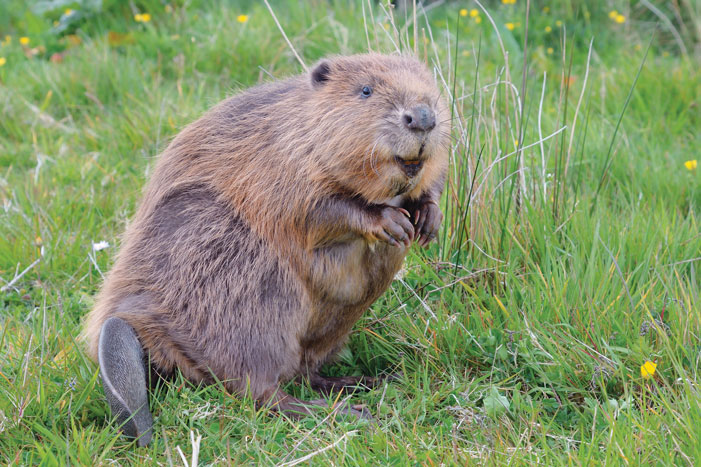Beavers are amazing animals. By building dams, digging ditches and coppicing trees, they can alter their surroundings in a way that has many benefits for people and wildlife. Hampshire & Isle of Wight Wildlife Trust are currently conducting feasibility studies at their reserves near Newchurch to see if a beaver reintroduction will be possible on the Island, and we hope to see these charismatic mammals locally in the future. Here are ten things you didn’t know about beavers…
- As large as a labrador but with shorter legs, the beaver is robust and heavily built. Two distinctive features are a broad, flat tail, covered with scales, and webbed feet. It has small eyes and ears, and light brown fur.
- Beavers were formerly native to the UK and played an important part in our landscape, until they were hunted to extinction in the 16th century for their fur, meat and scent glands.
- Beavers are often referred to as ‘ecosystem engineers’, and the loss of this charismatic species led to loss of the mosaic of lakes, meres, mires, tarns and boggy places that it so brilliantly built.
- They make changes to their habitats such as digging canal systems, damming water courses, and coppicing tree and shrub species, which create diverse wetlands.
- In turn, these wetlands can bring enormous benefits to other species such as otter, water shrews, water vole, birds, invertebrates (especially dragonflies) and breeding fish.
- Beavers by their very nature love deep water. They are timid animals and require deep ponds as a route of escape.
- Beavers make dams so that they can move about and feed in safety. They also like the entrance to their burrow to be submerged, so where they don’t have deep water, they can create it. In larger rivers and lakes, they don’t need to build dams.
- Beavers are herbivores. Contrary to popular belief they don’t eat fish, and actually co-exist with them very well.
- Beavers live in family groups with an average of about five individuals, comprising adults, kits and yearlings. Females produce a single litter of one to six kits per year.
- Beavers have a third, transparent eyelid (called a nictitating membrane) that protects their eyes as they swim underwater.
Discover more with your local Wildlife Trust: www.hiwwt.org.uk



